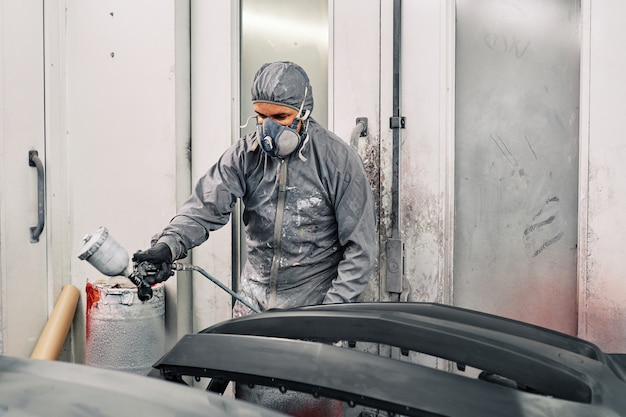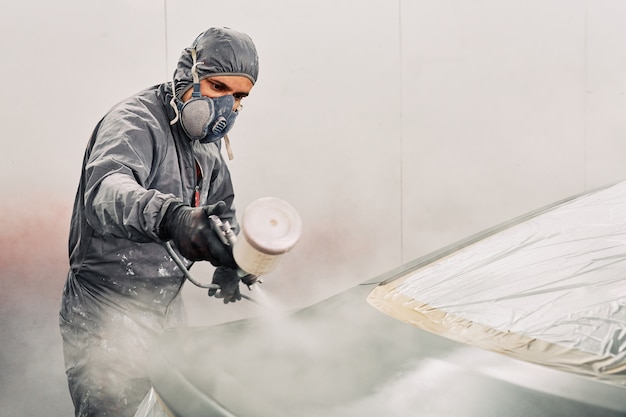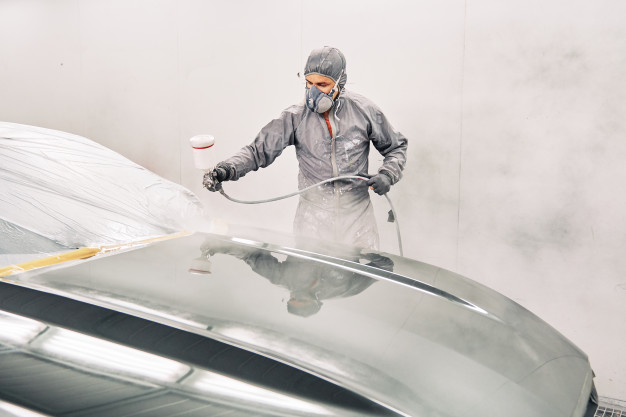1) What Is the Difference Between Washing and Detailing?
Washing the car is a simple operation that allows us to remove dirt, dust and all the debris, even organic, that is deposited there from the surface of the bodywork. With the detailing of the car, on the other hand, you work on the painting, eliminating imperfections caused by time but also by improper washing, giving the car colour depth and shine. Usually, people have more free time during the summer, so it’s the ideal time to take a break and take care of the car in a targeted way.

2) Working on the Car Paint
Car painting should be performed on the cold bodywork, possibly in a covered or shaded area. Working with chemicals on warm paintwork is counterproductive and satisfactory results will not be obtained, as liquids tend to dry prematurely and increase the risk of damage.
3) Paint Decontamination
Here’s a simple experiment to do after washing your car. Take a thin plastic bag, put your hand inside and rub the body of your vehicle using the palm of your hand. This will immediately help you realise how irregular the car surface is. You will notice deposits on the paint that are almost invisible to the naked eye. These are residues, mainly metallic or resinous, that over time contaminate the surface layers of the paint, making it opaque. The first step is therefore to decontaminate, either chemically or with the help of a Clay Bar (a clay bar with which you can massage the whole body together with a lubricant).
After washing and decontaminating the body, you need to see which areas still have imperfections, such as the so-called “swirling” circular wax scratches that are especially visible on dark colours. This will help you have a better idea about where you need to restoration interventions. It is, therefore, necessary to carefully inspect the surface using a specific torch to assess what action needs to be taken to polish the paint.
4) Protection of Parts Not Treated
The detailing of plastic parts, gaskets, lights and badges applied to the car could be compromised. It would help if you, therefore, protect them by covering them with the special masking tape and protecting yourself from accidental damage that may be costly to repair.

5) Choose the Right Polish
Depending on the type and severity of the defect found, the appropriate polishing paste should be used to even out the transparent varnish layer. There are different types of products with various abrasive forces, from zero wear chemicals to the so-called Compounds, which are formulated to provide a high capacity to remove defects. The suggestion is to have a mix of products available so that the different types of defects on the painting can be treated.
6) Hand Polishing
The varnish polishing process can also be carried out without the use of electrical machines. You will need a good dose of elbow grease and a set of specific pads for this type of operation. However, the use of a polishing machine makes it possible to obtain excellent results and a high degree of error correction. On the market, there are numerous models of polishers with different prices and characteristics. The polisher must be combined with the pads and the supports needed to use the polishing pads. The pads must be chosen in relation to the type of polish that will be used, selecting products with similar abrasive power.
If you’re looking for car paint protection services in Narre Warren, the team at Buff n’ Stuff offers unrivalled car paint protection services to both private businesses and individuals! They use the latest Nano-technology paint sealants to guarantee excellent service. Contact them today!





